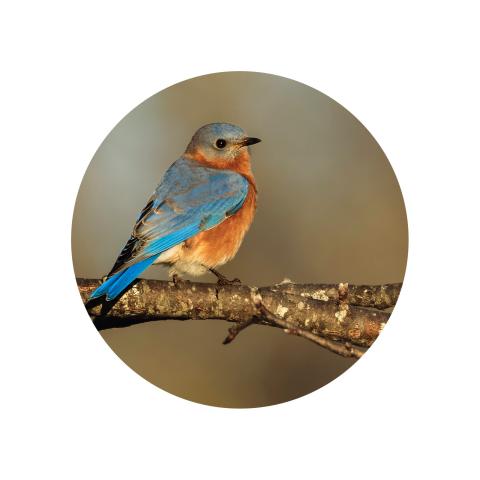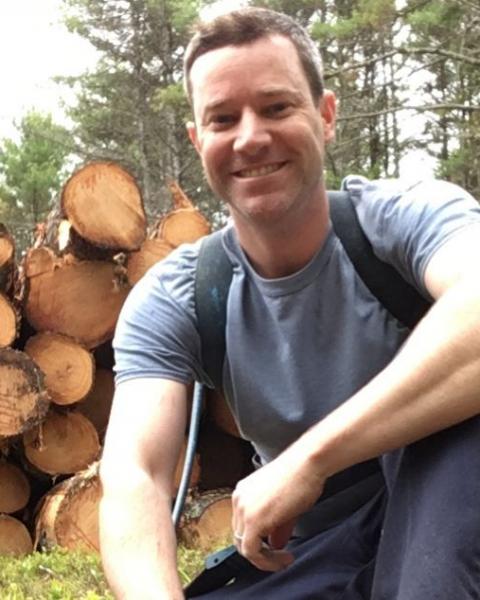Little Seeds, Big Trees
In southeastern New Hampshire, the autumn of 2023 was an excellent “mast year” for eastern white pine and – although a bit patchy – northern red oak. From a silvicultural standpoint, both species can be challenging to regenerate, and foresters must often wait several years for bumper crops of cones or acorns before scheduling regeneration harvests. Fortunately, observant woods workers have time to prepare since the seeds of both white pine and red oak take two years to mature. With attention fully on pine and oak over the last couple of years, many foresters – me included – didn’t notice that many eastern hemlocks (Tsuga canadensis (L.) Carr.) were ready to produce lots of seeds this year, too.
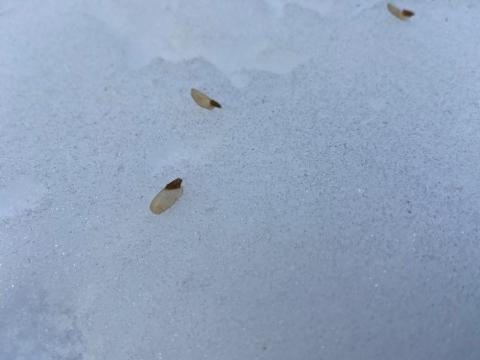
Winged hemlock seeds are wind dispersed and commonly found on the snow.
I am used to finding tiny, winged black birch seeds (see The Mighty Birch Seed, January 2022) on the snow’s surface. However, after a recent mid-January snowstorm, I also noticed lots of other seeds that resembled miniature maple samaras. A quick check of the US Forest Service’s Woody Plant Seed Manual[1] jogged my memory – these were hemlock seeds and there were lots of them!
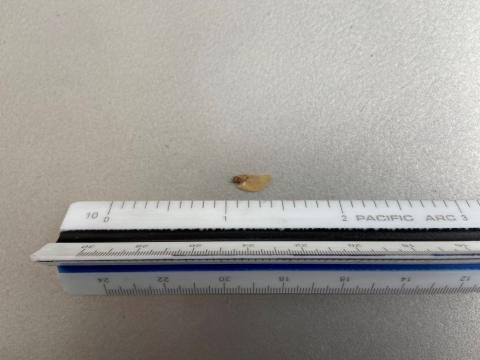
A tiny hemlock seed attached to a broad, maple-like, wing.
Everything about hemlock reproduction is understated. The tiny, wind-pollinated flowers are produced in spring and the small, ovoid (egg-shaped) cones mature around the middle of October.[1] The seeds, which are only about 1/16th of an inch long, are dispersed by wind from mid-autumn into the winter. I often find abundant hemlock regeneration in old skid trails under a partially closed forest canopy. In southern New Hampshire, black birch seedlings and saplings are commonly found in similar habitats.
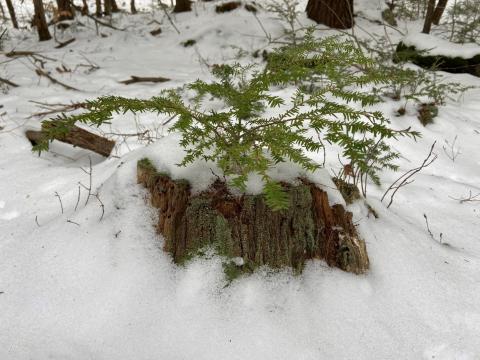
Young hemlocks are often found growing on fallen trees (“nurse logs”) and decaying stumps.
Young hemlocks are also frequently found growing on decaying logs and stumps – ideal moist and warm microsites for tiny seeds and trees that cannot dry out.
Although hemlock lumber can be challenging to work with and is not as highly prized as white pine, good markets still exist for logs. In addition, hemlock provides outstanding winter cover that is especially valuable for white-tailed deer. That said, in the past, silviculture of hemlock (when compared to pine and oak) was sometimes overlooked by local foresters. That trend has shifted in recent years as non-native forest pests – hemlock woolly adelgid and elongate hemlock scale – have made hemlock’s future in southern and central New Hampshire a little less certain.
If you would like help managing hemlock on your property – whether for timber or wildlife habitat – contact your UNH Extension County Forester.
[1] Godman, R. M. and K. Lancaster. 1990. Hemlock. In: Volume I: Conifers. Silvics of North America. USDA Forest Service Agriculture Handbook 654. R. M. Burns and B. H. Honkala, Technical Coordinators. 877 p.
https://www.srs.fs.usda.gov/pubs/misc/ag_654/volume_1/tsuga/canadensis.htm#:~:text=Seedling%20Development%2D%20Despite%20the%20high,than%2025%20percent%20(36). Last accessed January 24, 2024.
Have a question about your woods? Contact your Extension County Forester today!
Do you love learning about stuff like this? Subscribe to the NH Woods & Wildlife Newsletter.
A quarterly newsletter providing private woodlot owners in New Hampshire with woodlot management news, pest updates, resources, and more.

